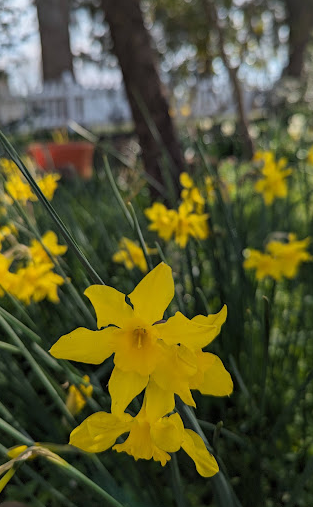Overused Plants
- Clifford Brock
- Nov 13, 2023
- 3 min read
Let me begin by saying that I don't particularly think any plant is "bad". Value judgments like that are meaningless. A plant we detest may be valuable to something else. What we consider a weed today may be the source of a future drug or new food for a bug.
So I'm focusing my attention instead on the landscaping and nursery industry and its dependence on and promotion of overused plants. Frankly, I'm just bored with seeing all the same things here in Newnan, for this is particularly an issue in suburban USA.
If you travel to any shopping center built in the last 20 years or so, you are likely to encounter a certain repeating pattern of plants, as well as businesses, lol. In the parking lots, you will likely find Chinese elm, also called lacebark elm (Ulmus parvifolia). This tree has a good track record here in the south, it's drought tolerant, resistant to compacted soils, rarely gets disease, and has ornamental bark. It is also really fast-growing.

But nurseries don't tell you that it produces umpteen thousand seeds that can infest surrounding forests. Though it is rarely mentioned on any invasive species list, this tree is quickly becoming a dominant component of the bottomland hardwood forests surrounding urban centers like Athens, Ga. Just east of UGA, you can find whole monocultures of this escaped tree.
But I digress, the real reason I'm beginning to sour on lacebark elm is simply because it's too common! I'm not against non-native trees, I'd just rather see more variety of species. And there are countless other options, like many oaks, both native and Asain. The possibilities are endless. But for this to happen nurseries must take more risks!

Another plant found everywhere nowadays is the sun-hydrangea or Hydrangea paniculata and all its many forms, sizes, and cultivars. 'Limelight' is probably the most purchased and popular cultivar. Here again, it isn't native, and it is still a great plant, but its beauty is diminished because of its overuse! Have we forgotten the truth behind the saying"too much of a good thing"?
Anything, no matter how attractive, can become dull and uninspiring if it is overused. As alternatives, I'd love to see more summer-blooming Clethra, or Wigelia.
Have you noticed most landscape plants are woody shrubs or trees? There is an important reason, for most landscaping companies aren't trained in caring for perennials and herbaceous plants. Think about the typical blow, clip, and mow treatment. They don't know how to let things grow and be "natural", so everything must be sculpted into tidy green spheres. And perennials aren't by nature tidy nor easily maintained, therefore, everything becomes a predictable mix of trees, "meatball" shrubs, and drifts of annuals.
If there are perennials, it's often mass plantings of liriope, ornamental grasses, autumn fern, or my next overused plant, the landscape daylilies, like 'Stella D'Oro' and 'Ruby Stella'. These are about the only sun-loving, blooming plants I see in commercial landscapes, well other than the ubiquitous drifts of annuals.

This provokes a deeper question... why do some plants become overused and others not? Ultimately, I feel consumers are to blame as well as producers. The overwhelming majority of customers seek out plants they've seen in other people's yards, and most producers are afraid to "rock the boat" with new or unusual plants. There is a real risk in investing in something very few people will buy. It becomes a reinforcing cycle of dullness and conformity.

We have the power as consumers to reject conformity. But this requires developing an interest in horticulture and a passion for biodiversity. And I'm a realist... it's just not on most people's radar. I know there are more pressing issues we should be worried about, like the war in the Middle East or Joe Biden's age, but we should also be thinking about what kind of world we want to inhabit and pass down to our descendants. Enhancing our environment includes all sorts of things, like removing trash, reducing pollution, and investing in green space that's both visually stimulating and biodiverse.




Comments